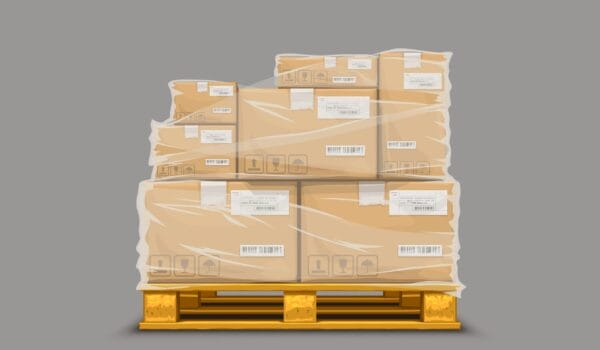Artificial intelligence (AI) is no longer a distant concept—it’s transforming how industries operate, and trucking is no exception. A common example of this is the Automated driver assistance system (ADAS), which relies heavily on AI processing algorithms, and has already become the norm in trucking. ADAS deployments have reduced heavy truck accidents by over 40% according to the National Safety Council (NSC, 2024). By streamlining operations, improving safety and efficiency, and facilitating cost-cutting measures, AI is opening doors for new possibilities in fleet management, logistics planning, and predictive maintenance. However, this potential comes with risks that trucking companies must address to adopt these technologies effectively and securely. Successfully leveraging this rapidly evolving technology requires a clear understanding of both its benefits and challenges.
Transforming Trucking with AI
AI is already widely used in the trucking industry, offering multiple benefits from sifting through and processing massive amounts of data for pattern recognition, predictive analytics, and the automation of repetitive tasks to enhancing driver safety. Some of these solutions directly translate into practical solutions for many of the long-standing challenges in the trucking industry such as fleet maintenance optimization, route planning, capacity management, and lane analysis.
Let’s first look at route optimization. Unlike traditional methods that rely on static maps, fixed schedules (and often a healthy dose of tribal knowledge), AI-powered tools use real-time data such as weather, traffic, and delivery deadlines to optimize routes dynamically. This type of direct interaction can greatly reduce service failures, while improving fuel economy and lowering overall costs. This can also reduce dwell time and delays between dispatchers for drivers. All of this will directly impact profitability and driver morale.
Let’s now consider the maintenance facility. Trucking operations can already realize massive gains here due to the improvements in systems that use AI, for instance, instead of waiting for a breakdown or obvious signs of wear discovered in a routine inspection, AI-enabled predictive maintenance systems can continuously monitor all sensor data from a vehicle and flag potential issues before they become major problems. This predictive approach to maintenance not only will minimize downtime but also potentially extend the lifespan of fleet assets by ensuring that maintenance can be scheduled in advance and completed prior to a service stoppage due to a breakdown on the road.
As we apply AI to the ever-present challenge of balancing freight networks and optimizing capacity management it will bring more streamlined processes for matching shipments with the best carriers (from a broker or shipper perspective) or optimizing the profitability of customers and lanes (from a carrier’s perspective). This will help to eliminate inefficiencies, reduce waste, and improve profitability. Combining all these different types of AI tools will be significant in also helping to predict seasonal and regional demand fluctuations, enabling companies to more effectively respond proactively to changing customer needs.
Automation: Balancing Promise and Reality
Automation is one of the most talked about uses of AI in trucking. While fully autonomous trucks are still in development, components such as automated braking, lane monitoring, and driver fatigue detection are already enhancing safety and efficiency on the road. These technologies aim to reduce accidents caused by human error while also improving the driver experience.
However, automation comes with challenges. Building trust in AI-powered systems is critical, especially in an industry where reliability and safety are paramount. These technologies must be rigorously tested in real-world conditions before they can achieve widespread adoption. There are also many regulatory and legal challenges to overcome, not the least of which is the question of liability in the event of an accident or incident involving an autonomous vehicle. For instance, in an accident involving an autonomous truck, it remains unclear whether the liability lies with the manufacturer, the fleet operator, or the AI developer. For now, automation is best seen as a tool to complement—not replace—human oversight.
Risk and Reward
Despite the potential benefits, integrating AI into trucking operations introduces several risks. AI systems rely on vast amounts of data to function effectively. When this data includes sensitive information about vehicles, drivers, and customers, it is easy to see how without proper safeguards, this data can become vulnerable to breaches or misuse.
Regulatory compliance is another hurdle. AI and privacy-related laws differ widely across jurisdictions. For example, California has some of the strictest data privacy laws in the country, while there are other states with little or no regulation. This patchwork of legislation makes it challenging for trucking companies operating across state lines to stay compliant. Moreover, AI and privacy regulations are evolving rapidly, requiring businesses to continually adapt.
Cybersecurity is also affected by AI. While AI can bolster defenses by detecting and responding to threats in real-time, it can also be exploited by threat actors. Cybercriminals are already using AI tools to create more sophisticated phishing campaigns, speed up the development of malware, and automate attacks at scale. These threats highlight the need for robust cybersecurity measures and a security-first mindset as companies adopt AI tools.
Best Practices for Implementing AI Safely
To make the most of AI while minimizing risks, the focus should be on thoughtful implementation. This begins with creating a clear plan that aligns AI initiatives with company goals. Transparency is critical—employees should understand how AI systems work and how they fit into day-to-day operations.
Tools such as Gemini from Google, Microsoft’s CoPilot, and Apple Intelligence (among others) are putting powerful AI tools directly in the hands of end-user. The need for thorough training of employees on safe and acceptable uses of AI is crucial. Training plays a pivotal role in successful adoption. AI systems, while powerful, are not infallible. Employees must be trained to identify potential biases in AI-driven decisions, such as freight-matching algorithms that prioritize certain carriers. Empowering staff to spot and address such issues can help to maintain fairness and efficiency.
Finally, staying informed about regulatory development is essential. Companies should regularly review their practices to ensure compliance with evolving laws across all of the states and countries in which they operate.
The Road Ahead
AI has the potential to be a powerful opportunity to address long-standing challenges in the trucking and supply chain industry and to drive innovation. By improving efficiency, enhancing safety, and streamlining operations, these technologies have the potential to transform the industry. However, their adoption must be approached carefully, with a focus on security, and the mitigation of risks to data privacy and regulatory compliance. Every company will need to find the right balance between innovation and responsibility. Companies who focus on thoughtful, secure-by-design implementations, employee education, and strong governance will be well-prepared to leverage this incredible technology.
Want to learn more about how AI is shaping the future of transportation? Download our comprehensive whitepaper “AI for Transportation: Risks, Benefits, and Best Practices,” to explore more on cutting edge trends, practical applications, and strategies for implementation.
Additionally, NMFTA held a webinar on this topic. Access a recording here at no charge.






